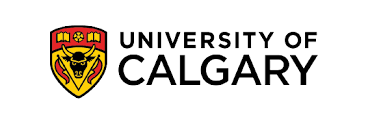University of Calgary: Post-secondary leaders reflect on creating healthy environments for working and learning
Working and learning in a post-secondary setting has its rewards, but it’s not without challenges, as several University of Calgary leaders discussed during last month’s Summer Wellness Series event.
Some of these challenges can have a significant impact on well-being, which is why the deans of the Faculty of Nursing and Werklund School of Education and associate dean (mental health) of the Schulich School of Engineering have worked with their teams to embed practices into the culture and structure of their faculties. During the Aug. 22 webinar, they discussed their individual and collective experiences.
Inform your path forward through empathy
Dr. Sandra Davidson, PhD, has seen many kinds of workplaces in her more than 25 years as a nurse and leader — some healthy, others not, and she’s taken lessons from both. The nursing dean has learned what not to emulate while working in a toxic environment and has held onto the “secret sauce” she noticed while working in more healthy ones.
Heathy work environments, Davidson said, made her feel less alone: “You always felt like there was somebody there … you had that support network.” Despite working in a complex and challenging field, a sense of connection made Davidson feel “less in the weeds” than she might have been.
Bringing forward her personal experience to her leadership positions, Davidson said leadership can impact an organization stewarding its culture toward that sense of connection. “There’s a certain level of visibility, and people are watching,” she said.
“What you talk about, and what you make time for, signals what is important.” That’s in part why Davidson’s team decided to elevate the importance of mental health and wellness in their faculty.
In addition to policies and practices that came out of nursing formally adopting the Campus Mental Health Strategy (CHMS), Davidson stressed how it matters to be purposeful and model best practices each day, such as creating boundaries.
“We need to give ourselves permission to disengage and allow others to do the same,” she said.
Create pre-conditions for a flourishing learning environment
Almost a decade ago, Dr. Dianne Gereluk, PhD, and colleagues noticed tension in their workplace. “There was something amiss in terms of the culture and ethos,” said the Werklund dean. After advocacy from various levels of staff, the faculty set a plan to articulate personal wellness and collective well-being in an effort to change its culture.
What started with surveys and consultation gradually led to evolving programs, policies and practices that have shaped how Werklund embeds well-being into its culture for not only faculty and staff, but also for students. Or, as Gereluk described them: “The future teachers, the future educational leaders, the future psychologists.”
Some of these initiatives have included launching mandatory courses for Bachelor of Education students on health, developing equitable and transparent workload guidelines for faculty and staff, and introducing a performance goal related to well-being for support staff.
“We needed to think of well-being as the precondition for learning and create conditions for a safe learning environment,” said Gereluk.
Meet your community where they’re at
When Dr. Kim Johnston, PhD, started teaching, reflecting with colleagues on their own past student experiences revealed more about personal journeys than academic ones. A common refrain: “I would have started therapy sooner.”
These discussions, plus Johnston’s own experiences dealing with stress management, led her to her current role as associate dean of mental wellness with the Schulich School of Engineering.
The school, also an adopter of the CMHS, incorporated mental wellness into its organizational culture, creating a newly dedicated wellness room, certificate program and co-curricular activities that support student wellness.
In her presentation, Johnston stressed the idea that implementing well-being practices can be done by anyone, and, in many cases, sometimes what’s needed is simply connecting students to pre-existing resources.
“We actually have upper-year students coming into first-year classes sharing stories, talking to each other about what it is they’re going through,” said Johnston, adding that, by sharing tools and strategies among one another, conversations and help-seeking behaviour can become even more normalized.
Don’t feel you need to do it all at once
The opportunities seem endless, and potentially overwhelming; you just have strike a balance, said CHMS director and associate professor Dr. Andrew Szeto, PhD.
“Academic culture is focused on productivity, at the expense of other things like [our own] well-being,” Szeto said. “It takes a fine balance.”
Gereluk highlighted the threat of workplace burnout. “I can’t imagine sustaining a pace, a level of cognitive ability, a level of tone and tact when you’re that exhausted,” she said. “Work hard … then take the proper break. The work will always be there… this is not our life, this is a challenging, good job.”
Thinking about her experience in teaching and learning, Johnston reflected on a conversation with colleagues: “The advice is: you don’t need to do absolutely everything this year. It’s OK to think about: what is the one thing I want to give a shot at this year?”
Davidson echoed her colleagues. “Replenish yourself so that you can give your best work, so that you have some energy left at the end of the day.”

